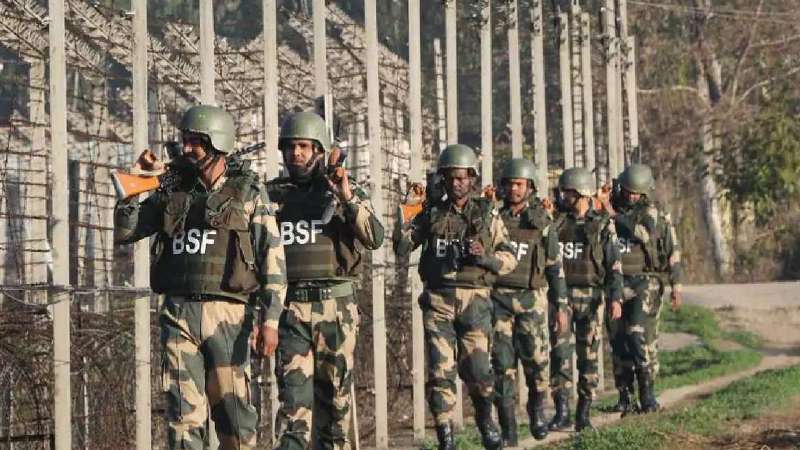The Border Security Force (BSF) will likely retreat from its previous stand on putting up “single-row fencing” in at least 90 territorial patches very close to the ‘zero line’ along the India-Bangladesh border spread across three states, at least two senior officials have disclosed to Northeast News.
This decision is “expected” to be shared with the visiting Border Guards Bangladesh (BGB) team officers led by the paramilitary outfit’s Director General Major General Mohammad Ahsrafuzzaman Siddiqui who will lead talks with his BSF counterpart today in Delhi. The BGB team will depart for Bangladesh on February 20.
While the BSF top brass is said to have shared its decision with senior Home Ministry officials, the organisation’s approach to reducing India-Bangladesh “misgivings” and “suspicions” comes in the backdrop of recent tensions along the 4,096-km-long boundary, especially in West Bengal and Tripura.
Tension between the two border guarding forces spilled over in some parts of the border over construction activities by both sides. On January 31, the BSF objected to the BGB’s move to construct a bunker in the Dahagram-Angapota area in Cooch Behar in the North Bengal frontier. This construction was sought to be carried out within the 150-yard stretch from the ‘zero line’.
On January 13, the Ministry of External Affairs summoned Bangladesh’s then-acting High Commissioner Nurul Islam over “security measures at the border, including fencing”.
On its part, the BSF proceeded ahead with border fencing in Kaliachak, Malda, even as the BGB had objected to this move. Fencing was being out by the Central Public Works Division, under the supervision of the BSF, at Sukdebpur under the Kaliachak-3 block. This was objected to by the BGB.
Earlier this month, tensions flared up between the BSF and the BGB in West Bengal’s North Dinajpur border segment when the Indian paramilitary outfit stopped what was described as “illegal construction” along the Kulik river embankment, within the 150-yard stretch from the ‘zero line’.
It is in the backdrop of the series of tense face-offs that today’s meeting kicked off in Delhi and will essentially force the BSF to “take a step back” to avoid any escalation given the broader context of bilateral ties which are at their lowest point since the departure of the Sheikh Hasina regime.
The BGB team will likely insist and apply pressure on the BSF as far as construction very close to the ‘zero line’ is concerned. As part of a de-escalation strategy, the BSF will propose that it will stop all construction and fencing work along the 92 patches of territory on the India-Bangladesh border.
The main issue is the construction of single-row fencing as close as 15-25 yards from the ‘zero line’ in some stretches of the border. Some years ago, the BGB, earlier known as the Bangladesh Rifles (BDR) had suggested the establishment of joint inspection teams to which the BSF did not show much interest. Consequently, the proposal was buried.
However, the BSF took up single-row fencing in 2019-2020. At that time, the BGB – Sheikh Hasina was in power at that time – had “informally” given permission to the BSF to undertake such fencing which is different from the double-row fencing in most other parts of the border. The double row fencing was the norm and such construction was carried out 150 yards from the border.
Besides this thorny issue, the BGB is expected to propose six other issues for discussion during the Delhi meetings. These include the prevention of trans-border crimes, the establishment of treatment plants for water canals that carry waste material from Agartala to Akhaura, border demarcation and land surveys, the training camps being operated allegedly by the Chakma group, Parbatya Chattogram Jana Samhati Samity and some confidence-building measures.
ALSO READ: Trump’s comments on Bangladesh: an interpretation ‘war’ and what more may follow
The BSF, on the other hand, is expected to propose deliberations on trans-border smuggling, the continuing operations of Indian insurgent groups on Bangladeshi soil and border demarcation besides, of course, halting construction of single-row fencing















